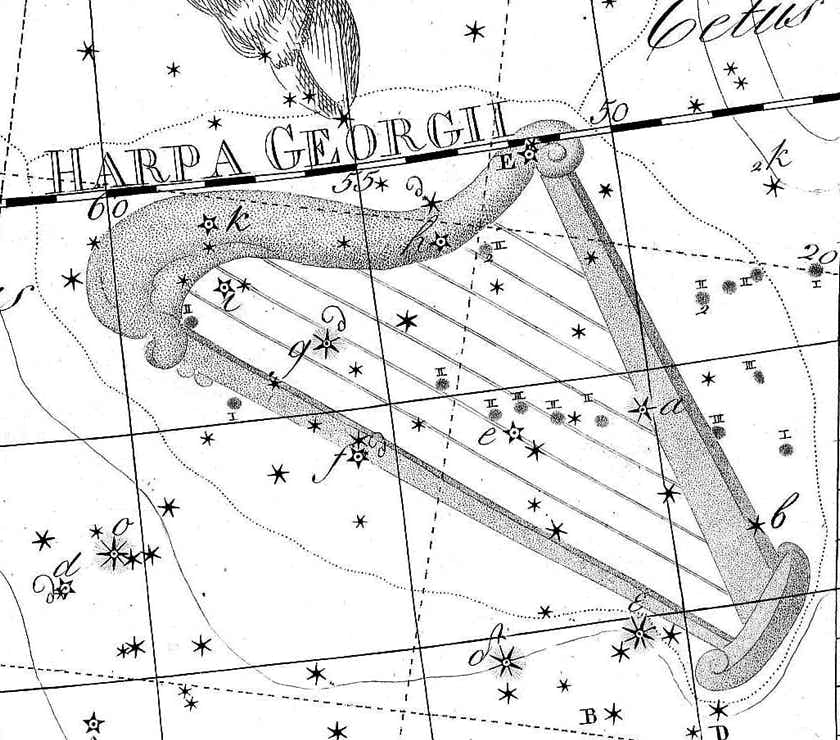
Maximilian Hell (1720–92), the Hungarian-born director of the Vienna observatory, introduced this constellation in 1789 under the name Psalterium Georgianum, i.e. George’s Psaltery, a psaltery being an ancient form of harp. It was intended to honour King George III of England, patron of William Herschel who had discovered the planet Uranus in 1781. Hell depicted the harp dangling from a ribbon beneath the hooves of Taurus on a chart in Monumenta, Aere Perenniora, Inter Astra Ponenda, a special publication issued to announce this constellation and two others he invented that commemorated William Herschel’s telescopes.[note]
Johann Bode adopted Hell’s new constellation on his Uranographia atlas of 1801 but simplified its name to Harpa Georgii. Bode depicted it as a more modern form of harp, dispensed with the suspending ribbon, and angled the harp to fit better between the surrounding constellations (below). This was the representation that became best-known, before it faded from the sky over the following decades.
The harp’s brightest star, labelled Gamma by Hell and E by Bode, was the present-day 10 Tauri, magnitude 4.3, lying almost on the celestial equator. Its other main stars are now part of northern Eridanus.
Harpa Georgii squeezed between the left hoof of Taurus (above), the mouth of Cetus (upper right), and the river Eridanus (below) on Chart XII of the Uranographia of Johann Bode (1801).
© Ian Ridpath. All rights reserved



